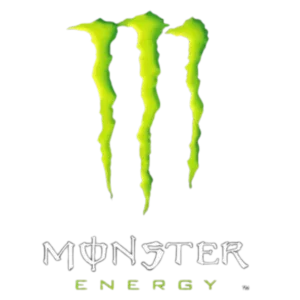Initially introduced in 1996, the HIPAA legislation’s primary purpose was to increase healthcare industry performance, enhance insurance portability, protect patients’ privacy, and ensure health information is kept confidential.
Three of the best examples of Personal Health Information are patient’s names, physical addresses, and email addresses, and the most significant benefits of HIPAA are:
- Aims to ensure privacy and confidentiality.
- It helps patients to view their healthcare records.
- It decreases fraudulent activity and strengthens data systems.
- Ensures that the covered entities must implement multiple safeguards to protect sensitive personal and health information.
Let’s take a look at the primary purposes of HIPAA today and what each of them involves.
Health care access, portability, and renewability
HIPAA requires the coverage of and restricts limitations that a group health plan can place on benefits for pre-existing conditions. Group health plans may fail to provide benefits relating to pre-existing conditions for either 12 months or 18 months in the case of late enrollment. Individuals are allowed to reduce the exclusion period by the amount of time they have had creditable coverage before enrolling in the plan and after any significant breaks in coverage.
HIPAA legislation improved efficiency in the healthcare industry by ensuring that workers receive health insurance coverage when moving between jobs.
Now that we know this, what else does the HIPAA law make provision for?
Prevention of healthcare fraud and abuse and medical liability reform
Healthcare fraud and abuse are prevented by protecting patients and health plan members’ privacy, thus ensuring health information is kept secure. Patients are notified of breaches of their health data. New standards have been set that require healthcare groups to adopt effective ways of reducing their paperwork burden.
One of the most troubling issues in medicine today is medical liability. State medical liability reform is essential to lighten the heavy burden of patient death and injury. The enormous financial burdens imposed on medical practitioners and insurance companies may restrict patient access to the best quality care.
Let’s take a look at which rules are in place to protect patients’ electronic and personal information.
The HIPAA Security and Privacy Rule
The HIPAA Security Rule protects the electronic personal health information (ePHI) of individuals that a covered entity creates, receives, uses, or maintains.
The Privacy Rule covers any protected health information (PHI) kept or transmitted by a covered entity in any form, whether paper, oral or electronic. Covered entities are required to take the necessary steps to limit the use or disclosure of protected health information to the necessary minimum. Under this rule, patients can also review and obtain a copy of their health records and request corrections.
The key aim of the HIPAA Security Rule is to ensure that electronically protected health information (ePHI) is adequately guarded.
Who are the covered entities under HIPAA?
- Health Plans – individual and group plans that provide or pay the cost of medical care.
- Health Care Providers – this includes every health care provider, irrespective of size, which transmits health information electronically in connection with certain transactions.
- Health Care Clearing Houses – entities that process nonstandard information they receive from another entity into a standard (i.e., standard format or data content), or vice versa.
- Business Associates – a person or organization, other than a member of the workforce of a covered entity, performing certain functions or activities on behalf of a covered entity involving the use or disclosure of health information.
Click here for more information on covered entities under HIPAA.
Permitted Uses and Disclosures
Information is essential to provide adequate healthcare. It is also crucial for everybody in the health care system to conveniently and efficiently access information to provide the right care at the right time and make appropriate decisions. The regulations have created a certain degree of uncertainty, and many have seen it as a possible barrier to accessing digital health information. Fact sheets were developed to eliminate this problem on HIPAA Permitted Uses and Disclosures, providing examples of when ePHI can be exchanged under HIPAA without requiring the patient’s specific authorization. The fact sheets address the following topics:
- Permitted Uses and Disclosures for Health Care Operations.
This allows a doctor or hospital to disclose identifiable health information to another covered entity for activities falling within HIPAA’S scope of health care operations.
- Permitted Uses and Disclosures: Exchange for Treatment.
This promotes the sharing of PHI among healthcare providers to treat their patients or coordinate care.
Now that we know more about permitted uses and disclosures, let’s look at the tax implications.
Tax-related health provisions governing medical savings account
HIPAA forbids the tax-deduction of interest on life insurance loans, enforces group health insurance requirements, and standardizes the amount of money saved in medical savings accounts before tax.
HIPAA also includes provisions related to the treatment of individuals who lose U.S. Citizenship for income tax purposes, company-owned life insurance, and repeals the financial institution rule to interest allocation rules.
Conclusion
In short, we can conclude that HIPAA’S primary aim is to enhance the portability of health insurance, to improve efficiency in the healthcare industry, and to protect the privacy of health plan members and patients, ensuring that patients are notified of violations and breaches and that their health information is kept secure.
Want to learn more about HIPAA?
Coggno has a wide range of HIPAA-related training courses.
Have a look at our free courses here and our course catalog here.




















